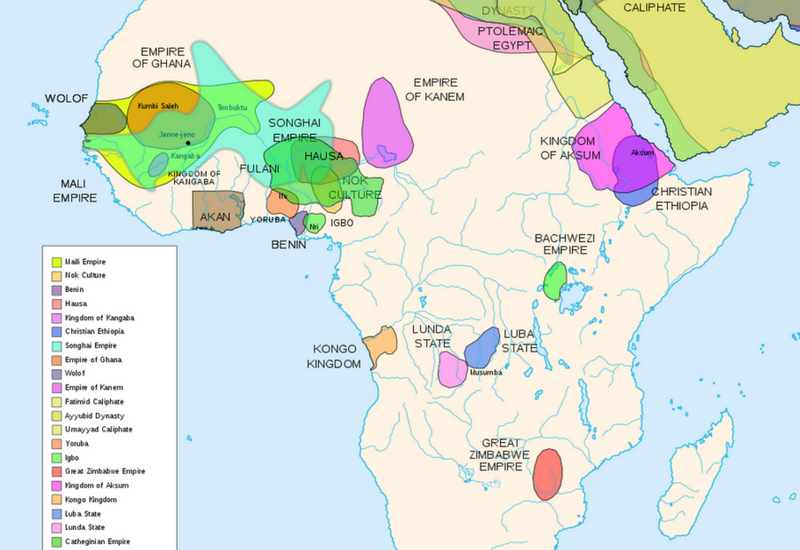
14th Century Luba Kingdom in Central Africa
In the late 14th and early 15th century, in central Africa a kingdom rose to prominence known as the Luba dynasty. This empire was located in the southern savanna between the Kasai and Lualaba rivers in what is present day Democratic republic of Congo (DRC) and stretched into present day Zambia and Angola.
There was a supreme Chief Balopwe who ruled over smaller chiefs. According to oral tradition the empire started with Nkongolo Mwamba. It is believed that Nkongolo Mwamba was of the Songye ethnic group of the northern region of the Luba. Nkongolo Mwamba is remembered as a cruel, repressive, and uncouth ruler who was the antithesis of good leadership. He was toppled by Kalala Ilunga or known in some historical accounts as Ilunga Mbidi Kiluwe the hunter from the east who established the Luba empire.
The differences between the two rulers are quite significant. Ilunga is remembered positively because he was a compassionate and caring King. On the other hand, Nkolongo ruled with an iron fist and flaunted his vices. This important aspect of ancient African empires helps to emphasize that modern day dictators are a vestige of colonialism.
Ilunga exhibited the characteristics that were viewed by the Luba as ideal for a leader. Ilunga was handsome and had a dark complexion which was the ideal skin tone for the Luba. He was a magnanimous leader with high moral character both privately and publicly. In contrast, the deposed Nkolongo was a brash alcoholic and lacked self-control. It is not surprising that the Luba embraced Ilunga and admired his governance over that of Nkolongo who brought suffering and terror upon the Luba.
The Luba considered justice, moral character and compassion as evidence of civilization and Ilunga embodied civilization. The Luba were hunters and agriculture. They grew cassava, sorghum and milled & reared livestock.



